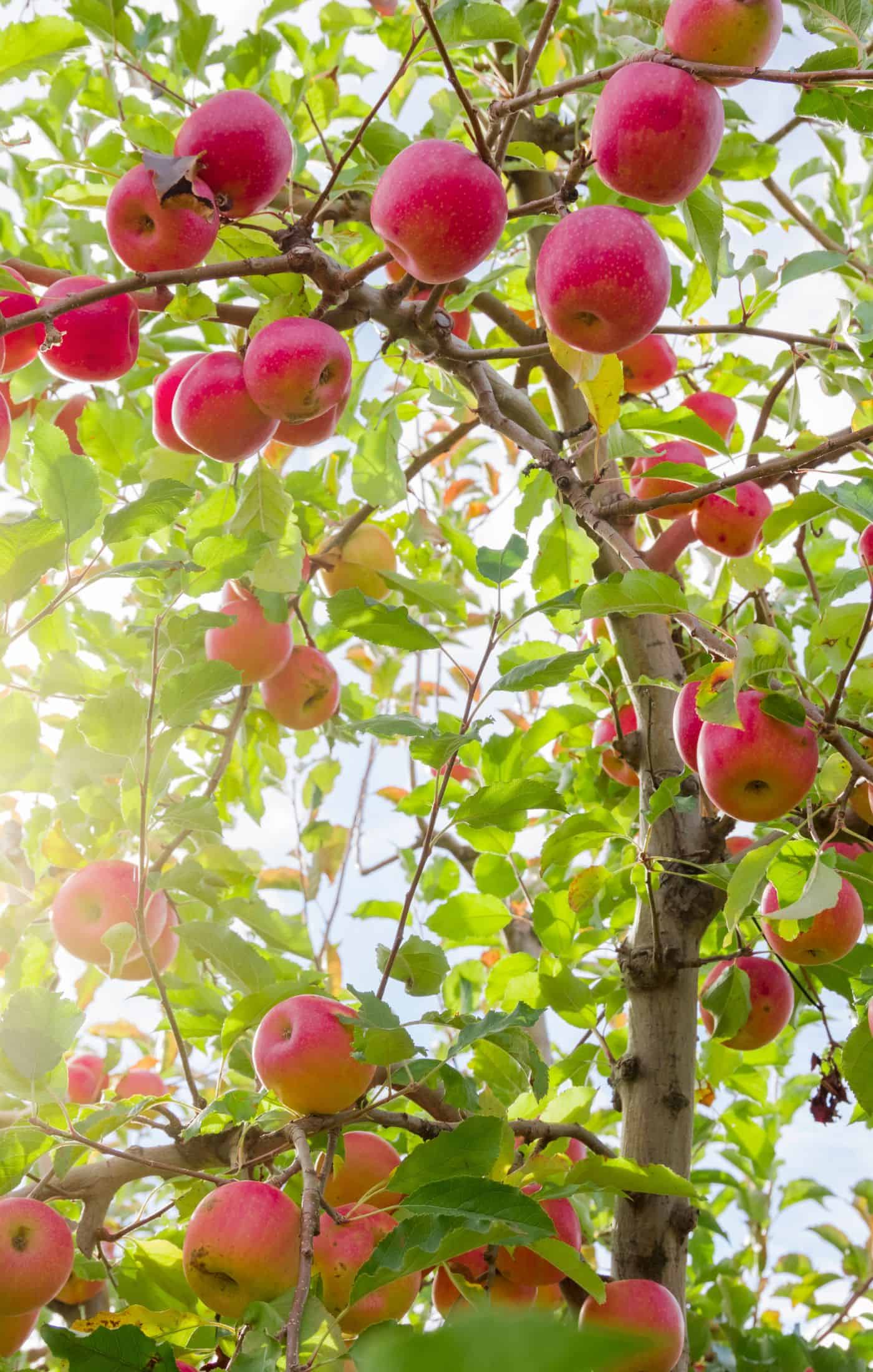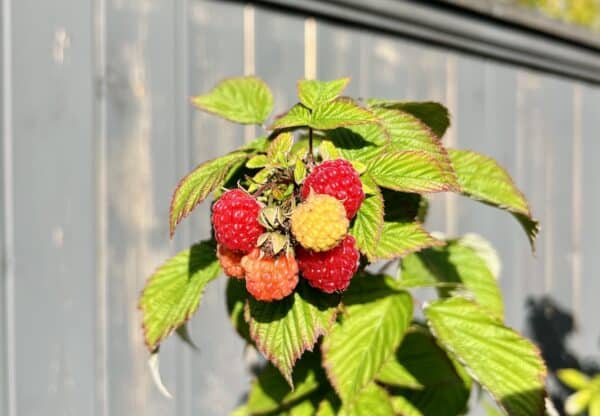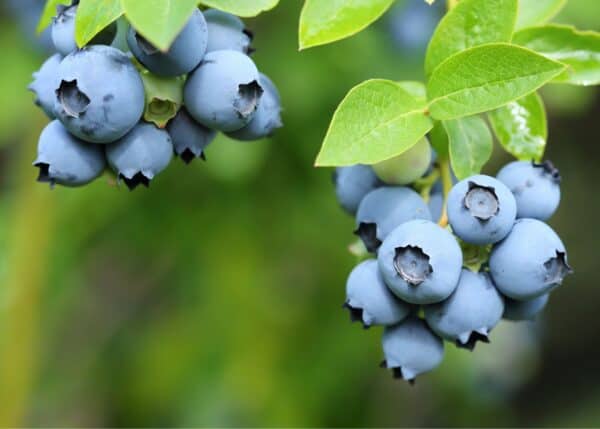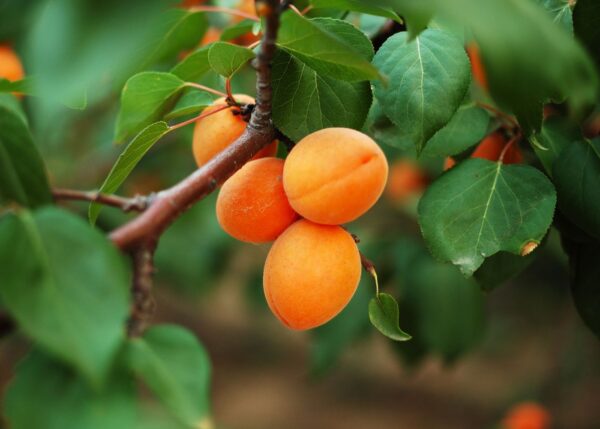Prune apple trees in the late winter or early spring. These fruit trees require pruning each year while they are dormant or are just coming out of dormancy. In many apple-growing climates, pruning is done in late February or early March. That said, you can (and should) remove dead, damaged, or diseased branches as soon as they are observed, no matter what time of year.
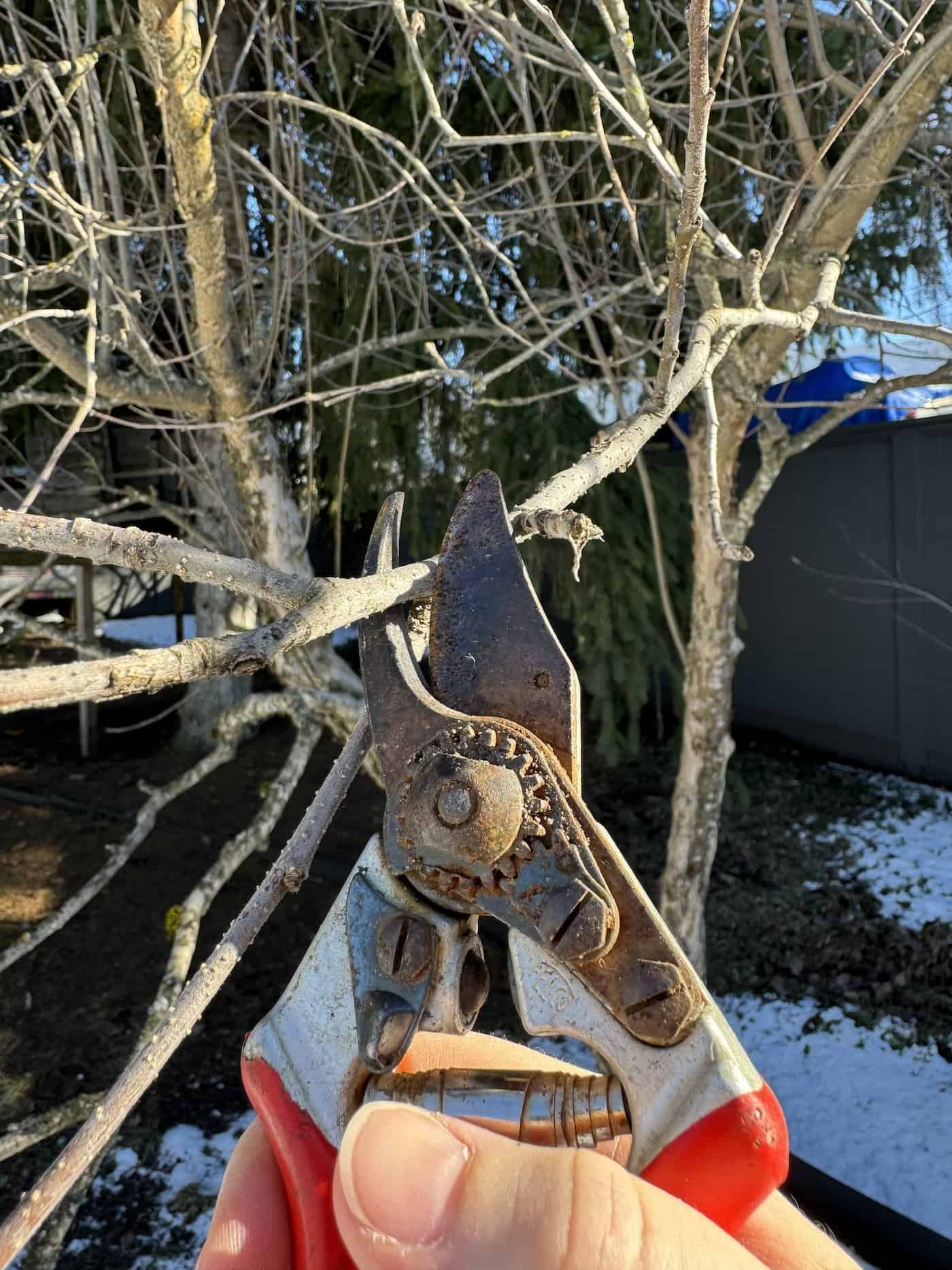
When to prune apple trees
The best time to prune your trees is when the trees are dormant. This usually occurs in late winter. Typically you want to prune the growing fruit trees in late February or early March, depending on the frost in your area.
Late winter is the best time for pruning apple trees for a few reasons. For starters, the buds are easier to see and work around as you prune any lateral branches. The wound cuts also have more time to heal and dry before insects arrive in the spring. You don’t want insects and pests making homes in your growing fruit trees when spring comes around. Here is a guide detailing how to prune apple trees.
You can also do some light pruning in the summertime to promote the formation of fruit buds for the next growing season. The key word here is light! This also lets light and air circulation into the canopy of the tree as the fruit ripens. Summer pruning should not be overdone, as this will lead to a weak tree, decreased harvest, and the possibility of snapped branches.
When to prune young fruit trees
If you have young fruit trees, they have different pruning requirements than mature fruit trees. Prune your young apple trees in late winter or early spring. Pay attention to the frost timing in your local area.
Young fruit trees should be pruned with one of three pruning methods. These include central leader, modified central leader, or open center methods. These train the tree to grow in the best way and promote fruit growth.
Only do as much pruning as is necessary to create the basic shape you want. Don’t prune any more than you have to, as this can delay fruiting on your precious trees. You may be tempted to over-prune, but over-pruning is no good for trees in bloom. Summer pruning is most likely unnecessary with young trees since their growth will be limited until they are established.

When to prune mature fruit trees
Prune mature fruit trees in late winter or early spring by removing water shoots and any dead, damaged, or diseased branches. Those dead and diseased branches will get in the way of the proper growth of living branches.
The stubby fruiting spur branches typically grow only off the branches that are a minimum of two years old, so don’t remove more branches than you have to. Let them grow more before pruning them in future years.
During dormancy, thin out any overly long stems that have grown quickly near the top of the tree. This is especially true for vertical “water shoots.” Also, remove any weak trigs hanging down from the branches.
Remove old declining limbs so that a younger limb can grow in its place. It’s important to trim any branches or limbs that are no longer growing to make room for new growth on your apple trees.
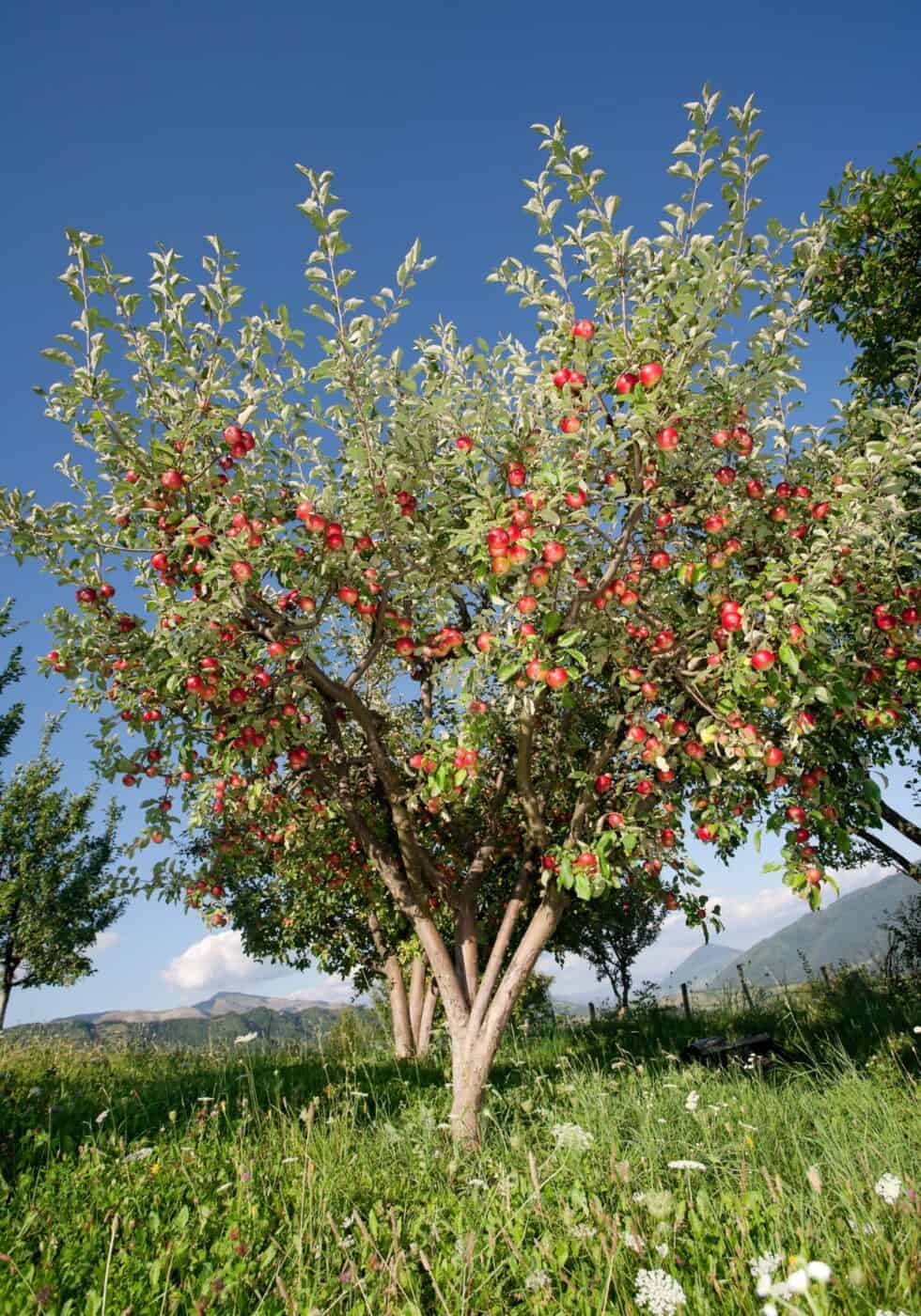
Clean your tools and keep them clean
Whether you use hand pruners, loppers, or a saw, keep your tools clean. After pruning your tree branches, dip your tools in isopropyl alcohol or Lysol cleaning solution and allow them to dry completely.
This will disinfect the metal and keep them from rusting over time. Be sure to let them dry completely or dry them with a clean cloth before storing them away. Cleaning your tools will prevent cross-contamination or any fungal diseases or problems that plants may have.
If you are worried about rust, use a small amount of solvent on a clean rag to keep moving parts lubricated. This should help, so your tools are ready to use as soon as you pull them out of storage each season.


